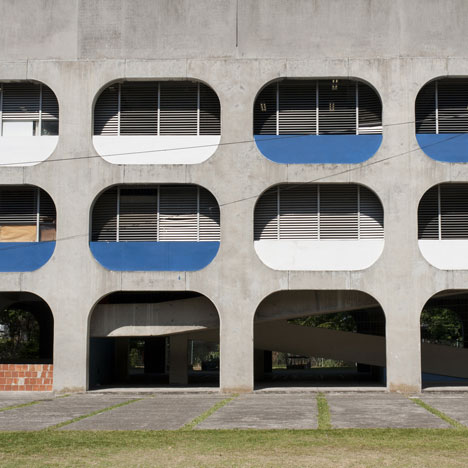
The UK can "learn lessons from school-building in Brazil" - Aberrant Architecture
News: following this week's news that the UK government is restricting curved and glass walls on new school buildings, Aberrant Architecture's Kevin Haley and David Chambers are urging the Department of Education to look to the standardised schools designed by Oscar Niemeyer for Brazil in the 1980s, which the architects are presenting in the British Pavilion for the Venice Architecture Biennale.
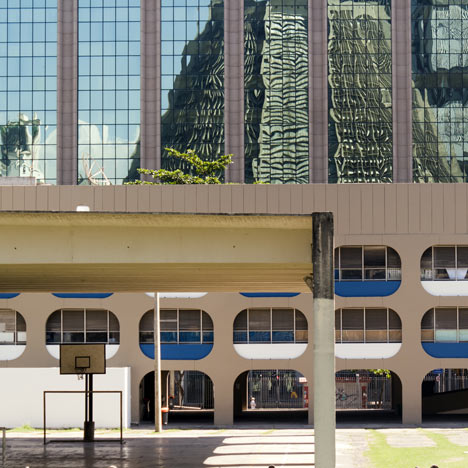
"Learning lessons from school-building in Brazil helps us develop the new ideas that are sorely needed to improve the design and production of school buildings in the UK," said Chambers, while Haley explained how the pair are "using the research we have collected to investigate the design potential for a similar approach for the UK."

The standardised ‘baseline’ templates for primary and secondary schools published this week place restrictions on room sizes, storey heights and building shapes for 261 replacement school buildings planned across the UK, as part of a bid to cut costs.
In response Haley has said: "In Brazil, the design of the 508 Integrated Centres of Public Education (CIEPs) was not simply standardised to reduce costs. The highly ambitious design, shared by each school, induces a global perception of a standard, a new standard - a standard of high quality."
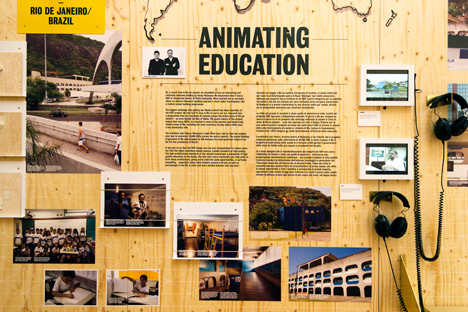
Above: Animating Education at the British Pavilion
Like Brazil's CIEPs, Haley proposes that the UK should "allow our schools to become more open to their context" and suggests that "each region could create its own standardised design, incorporating local cultural and climatic requirements."
"The idea that every community, from suburb to favela, can take pride in first-class architecture, giving every child the same opportunities, is certainly a compelling ideal, especially today, when modern society in Brazil, as well as increasingly in the UK, is more and more divided between rich and poor," said Haley.

Above: Animating Education at the British Pavilion
Aberrant Architecture's initial research is documented in their exhibition "Animating Education" at the biennale, where they are showing models to represent each of the CIEPs completed in Brazil.
Read more about the government restrictions in our earlier story.
See more stories about Aberrant Architecture »
Here's the full statement from Kevin Haley:
The pressing need in the UK to build new primary schools to address overcrowded classrooms and growing competition for school places thus begs the question: what lessons can we learn from the CIEPs example? Which of the ideas championed by Brazil should we adopt and which ideas can we build upon?

Above: Animating Education at the British Pavilion
In the 1980s, Rio de Janeiro, much like the UK now, had limited money to spend on education. In response to this, Oscar Niemeyer put forward a standardized design for the CIEPs. The strong design of his principle educational building, prefabricated to ensure consistent quality, contained architectural spaces, using strong durable materials that were specifically designed to support, help and enhance the educational curriculum. Architectural additions such as the dedicated sports hall, library, canteen & rooftop housing spaces, supported and enhanced the recreational, cultural, nutritional & residential aspects of the full time program. These standardised elements could be arranged in multiple configurations in order to respond to varying site conditions.
Money saved through standardisation could subsequently be invested into the curriculum. Schools could offer a full time curriculum available from 7am – 10pm. CIEP programs not only respected students’ cultures but also enhanced them. Some subjects were not taught if they were not beneficial to the class of children. Other subjects were therefore introduced, creating a personalised curriculum. Such an idea could no doubt also be used to address the increasingly culturally diverse communities of the UK.
The full time curriculum helped working parents avoid expensive childcare, a very pertinent problem in the UK today. It also gave those from poorer backgrounds access to a wider range of cultural stimuli. Three meals a day, designed by a nutritionist, helped the diets of some of the undernourished children. It could be argued that childhood obesity, rather than undernourishment, is the problem in the UK. But in any case, being offered the option of three healthy meals a day would no doubt make a huge difference in a lot of cases.
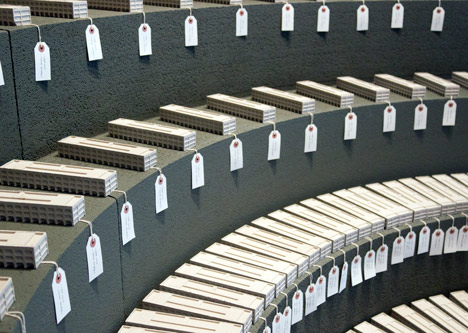
Above: Animating Education at the British Pavilion
Each region of the UK could create its own standardised design, incorporating local cultural and climatic requirements. The constant would be the full time education and the commitment to taking care of the children’s individual needs.
In Brazil, it was put to us that the design of the 508 CIEPs was not simply standardized to reduce costs. The highly ambitious design, shared by each school, induces a global perception of a standard, a new standard - a standard of high quality. The high architectural standard on the outside subsequently encourages a perception of high quality education on the inside. The idea that every community, from suburb to favela, can take pride in first-class architecture, giving every child the same opportunities, is certainly a compelling ideal – especially today, when modern society in Brazil, as well as increasingly in the UK, is more and more divided between rich and poor.
Whilst we understand the arguments for standardisation of the CIEPs it would be interesting to see how you could adjust the model school a little bit more, to better suit each individual site. Perhaps this can be achieved by starting with the CIEP model of having a main classroom block and regular CIEP accessories, such as the sports hall, library building or swimming pool, and then being able to add to or change some of these accessories later on.
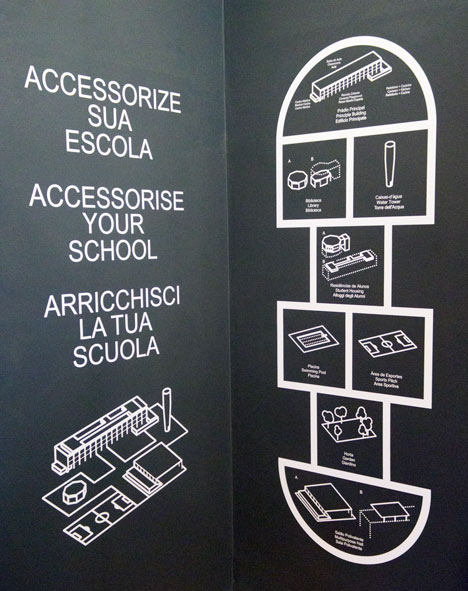
Above: Animating Education at the British Pavilion
A very interesting strategy would be to allow our schools to become more open to their context. Perhaps these new accessories could create additional openness between the school and its surroundings, placing the School in the context of its neighbourhood rather than as some kind of alien visitor.
Take a covered playground as an example, a more strategic solution could be if it worked more as a city square and brought more people into the schools. This idea starts to become interesting in the UK context because this space could fill the role of a public square, which is often non-existent in many British suburbs.
Since the school is arguably the most important public building in our communities it could start to provide more functions related for the common use. School accessories could include an ‘IT room’ as well as a multi-purpose arts and culture building, which could then be used for theatre, dance and martial arts, as well as provide a space for filming and editing movies. Such a space would not only appeal to the students but also to their parents as well.